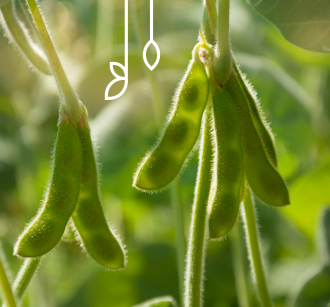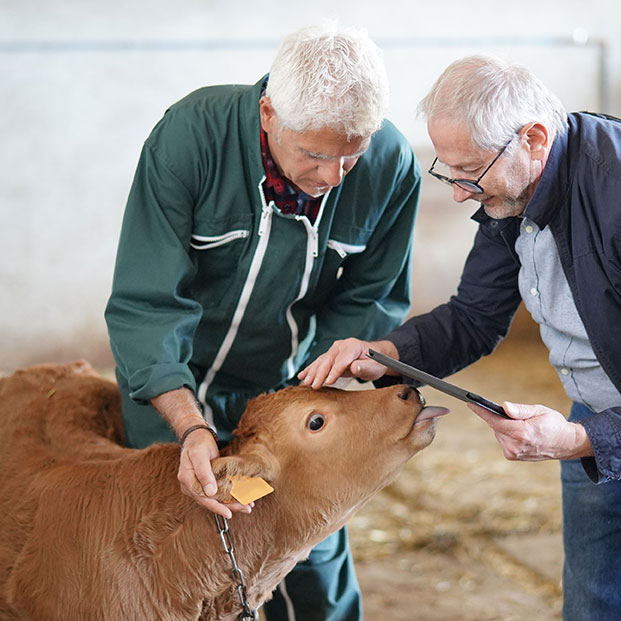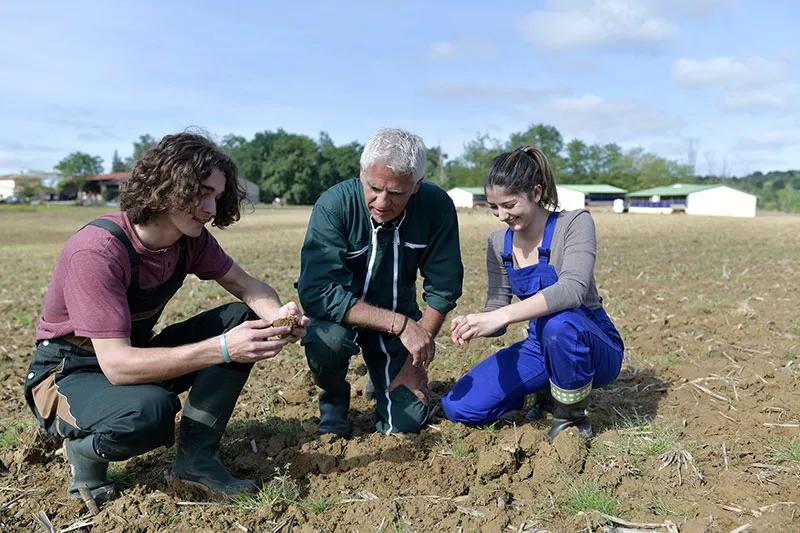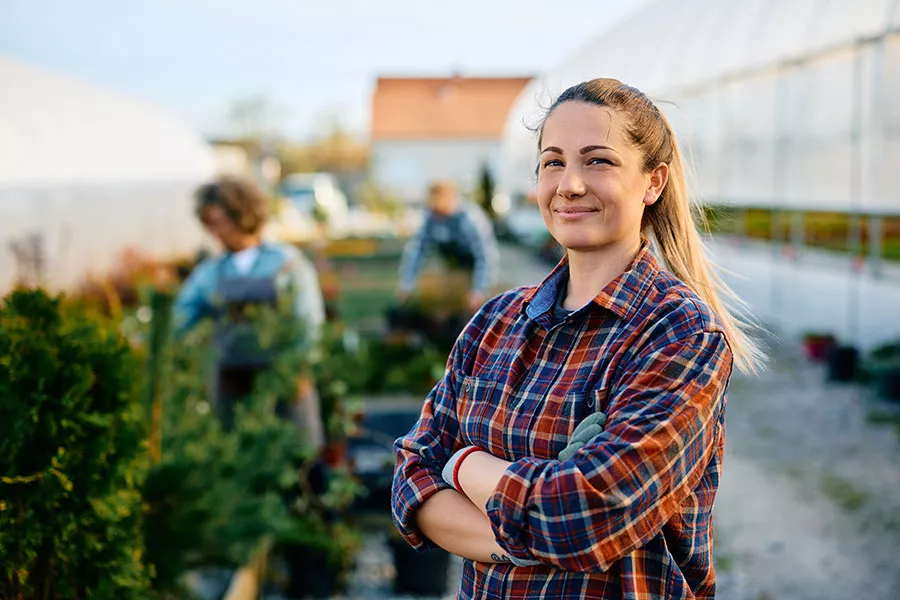



Projects with a multi-actor approach (MAA) focus on seizing opportunities or finding solutions to real needs, problems and challenges that farmers, foresters or rural communities ('end users') are facing. In MAA projects, partners with complementary expertise – scientific, practical or other knowledge – join forces and become involved in the project activities from very start to end. As a result, MAA projects are able to develop innovative solutions that are more ready to be applied in practice and cover real needs.
On this page:
- What is the multi-actor approach?
- How to apply for funding for a multi-actor project?
- Looking for inspiration and advice on how to build a multi-actor project?
What is the multi-actor approach?
The interactive innovation model is based on a multi-actor approach (MAA) that involves all relevant actors with complementary backgrounds and expertise to co-create and share knowledge, best practices and innovative solutions responding to the needs of the users, farmers, foresters and advisors, in a bottom-up approach. The MAA in the Horizon Europe work programme is considered as a form of responsible R&I, aiming to make the R&I process and its outcomes more demand-driven, reliable and relevant to society. The most recent definition and requirements of the MAA are included in the introduction of the Horizon Europe Cluster 6 Work Programme 2023-2024 (pages 21-23).
The interactive innovation model
The interactive innovation model is being applied in Horizon-funded multi-actor projects, including thematic, advisory networks and living labs, as well as CAP-funded Operational Groups (OG). The multi-actor projects and OGs are co-creating new knowledge and solutions, focusing more on tacit knowledge of the practitioners and real needs on the ground. The thematic and advisory networks, which are a special kind of multi-actor projects, aim to share knowledge and innovation as widely as possible among the practitioners.
The multi-actor approach aims to have the outcomes shared more extensively. This entails more than just widely disseminating a project’s results, or listening to the views of a board of stakeholders. A multi-actor project ensures the genuine and sufficient involvement of a targeted array of actors, which serves the objectives of the project.

These actors include:
- researchers
- farmers / farmers' groups and associations
- foresters / foresters' groups and associations
- aquaculture producers
- fishers / fishers' groups and associations
- advisors
- food and bioeconomy businesses
- other businesses
- consumer associations
- local communities
- citizens
- civil society organisations including NGOs
- government representatives
Which key actors are relevant to participate depends on the objective of the project. They are essentially the (end) users of the project results who are backed up by any other useful intermediaries and actors who can contribute with further expertise and innovative ideas relevant to the project’s objectives, and support communication and dissemination. The genuine and sufficient involvement of such actors should take place all over the whole course of the project: from participation in development of the project idea, planning and experiments to implementation, communication and dissemination of results and to a possible demonstration phase. Building blocks for the project are expected to come from science as well as from practice: it is a ‘co-creation’ process. Practitioners and (end) users are to be involved, not as a study object, but to use their practical and local knowledge and/or entrepreneurial skills to develop solutions and create 'co-ownership' of results for (end) users and practitioners. This contributes to and speeds up the acceptability and uptake of new ideas, approaches and solutions developed in the project.
The multi-actor approach has been overall reinforced under Horizon Europe. To this end, the definition and requirements of the MAA included in the introduction of the Horizon Europe Cluster 6 work programme 2023-2024, p. 21-23 have been revised and simplified. In addition, the scope of the topics outlines the main actors that are required to be involved in the projects. In the evaluation, MAA is not only an excellence criterion, but also the eligibility criterion. The multi-actor approach has also been opened up to all sectors under Cluster 6 including agriculture, forestry and rural areas, food, bioeconomy, environment, fisheries and aquaculture, etc. As a result, in the two consecutive Cluster 6 work programmes, 44% of the topics (worth more than 40% of the budget) require MAA. In total, under Horizon 2020 and Horizon Europe, more than 350 multi-actor projects have been funded so far.
Requirements
Detailed requirements for multi-actor project proposals have been spelled out in detail in the Horizon Europe work programme. More specifically, a multi-actor project proposal must demonstrate:
- how the proposed objectives and planning are targeting the needs/problems/challenges of and opportunities for the (end) users of the project results;
- how the description of the project concept and in particular the composition of the consortium reflects a balanced choice of relevant key actors who have complementary types of knowledge (scientific, practical, etc.), and must ensure that project results, which should be ready for practice, are broadly implemented;
- how the project intends to use existing practices and tacit knowledge. This should be illustrated in the proposal with a sufficient number of high-quality knowledge exchange activities outlining the precise and active roles of the different non-scientific actors in the work. The cross-fertilisation of skills, competencies and ideas between actors should generate innovative findings and solutions that are more likely to be applied on a wide scale;
- how the project will facilitate the multi-actor engagement process by making use of the most appropriate methods and expertise;
- the project's added value: how it will complement existing research and best practices;
- how the project will result in practical and ready-to-use knowledge, approaches, tools or products, that are easily understandable and freely accessible;
- how these outputs ready for practice will feed into the existing dissemination channels that are most consulted by the (end) users of the project results in countries and regions.

Practice abstracts
Horizon multi-actor projects are required to share their results in the form of ‘practice abstracts’. These concise, practice-oriented summaries help projects share their outcomes more widely across the EU, reaching others in the field of agriculture, forestry and rural areas. All results can then be collected and freely searched as practice abstracts in the EIP-AGRI project database.
Visit the dedicated webpage to find out more about submitting your project information and practice abstracts to the EIP-AGRI project database.
Looking for inspiration and advice on how to build a multi-actor project?
- Get to know the results of the Horizon 2020 LIAISON project and follow the Horizon Europe PREMIERE project.
- Read the EIP-AGRI brochure on Horizon 2020 multi-actor projects (2017).
- Watch the videos and presentations from the seminar 'Interactive innovation in motion: multi-actor projects and thematic networks under Horizon 2020'.
- Download the EU CAP Network factsheet ‘Tips & tricks to apply for Horizon Europe calls’
Find out more on how to apply for multi-actor projects under Horizon Europe.
Learn more about
Multi-actor approach projects list
Learn moreHorizon Europe
Learn moreThematic networks
Learn moreAdvisory networks
Learn moreThe EIP-AGRI project database is currently under construction. Once online, you will be able to search all innovative projects, including Operational Groups and multi-actor projects, from 2014 onwards. Through this link you can find a list of previous multi-actor projects’.